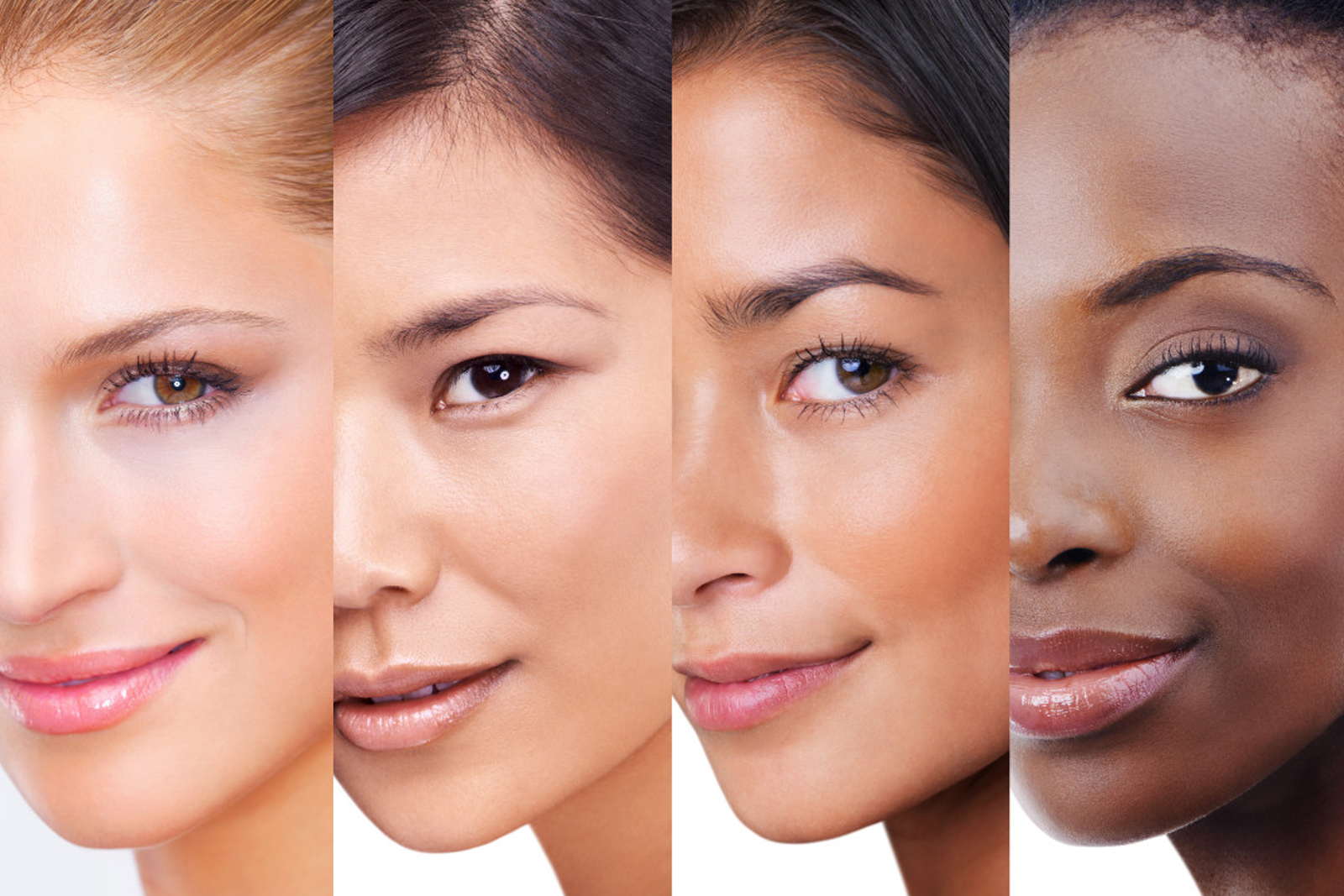
Your skin is as unique as you are, and it deserves personalised care to look and feel its best. This comprehensive guide delves into the world of skincare, catering to different skin types while incorporating medical insights to provide a holistic approach to beauty and well-being. Whether your skin is oily, dry, sensitive, or a combination, this guide has you covered.
Section 1: Skin Basics
Before we explore the intricacies of skincare for different skin types, it’s essential to grasp the fundamentals.
1.1 Skin Anatomy
Understanding your skin’s structure is vital. We delve into the different layers of the skin, the role of each layer, and how it influences your skin’s health and appearance. The skin is the body’s largest organ, and knowing how it functions is essential for tailored care.
The skin is composed of three primary layers: the epidermis, dermis, and subcutaneous tissue. Each layer serves a specific purpose in maintaining skin health. For example, the epidermis is responsible for protection, the dermis for structural support, and the subcutaneous tissue for insulation and energy storage.
1.2 Common Skin Types
Discover the four common skin types: oily, dry, sensitive, and combination. We discuss how to identify your skin type and what it means for your skincare routine. Every individual’s skin type falls into one of these categories or is a combination of two or more. Understanding your skin type is the foundation of effective skincare.
- Oily Skin: Oily skin is characterised by overactive sebaceous glands, resulting in excess oil production. People with oily skin often have enlarged pores and may be prone to acne and blackheads.
- Dry Skin: Dry skin lacks adequate moisture and can feel tight, rough, and prone to flakiness. It may also be more susceptible to early signs of aging like fine lines and wrinkles.
- Sensitive Skin: Sensitive skin is prone to irritation, redness, and reactions to various environmental factors, such as skincare products, weather, or certain ingredients.
- Combination Skin: Combination skin is a blend of different skin types on different areas of the face. It often presents as an oily T-zone (forehead, nose, and chin) and dry or normal cheeks.
1.3 The Role of Dermatology
Dermatology plays a crucial role in understanding and caring for your skin. Learn how dermatologists diagnose and treat various skin conditions and the importance of regular skin check-ups. Dermatologists are medical professionals specialising in diagnosing and treating a wide range of skin, hair, and nail conditions. They are experts in identifying skin cancers, offering cosmetic procedures, and providing tailored guidance for skincare routines.
Dermatologists can help with various skin issues, including acne, eczema, psoriasis, and skin cancer. Regular check-ups with a dermatologist can aid in early detection and prevention of skin conditions.
Section 2: Oily Skin
Oily skin requires a unique approach to manage excess sebum production and maintain a clear complexion.
2.1 Characteristics of Oily Skin
Understand the traits of oily skin, including enlarged pores, shine, and a tendency to acne. Oily skin is primarily characterised by excessive sebum production, leading to a shiny appearance. The excess oil can also contribute to clogged pores, which may result in acne and blackheads. Enlarged pores are another common concern among individuals with oily skin.
2.2 Skincare Routine
Explore a tailored skincare routine for oily skin, incorporating cleansers, toners, exfoliants, and moisturisers designed to control excess oil production. An effective skincare routine for oily skin focuses on balancing oil production, maintaining clear pores, and preventing breakouts.
Cleansing: Cleansing is a fundamental step in an oily skin routine. A gentle, foaming cleanser can effectively remove excess oil and impurities. Look for cleansers with ingredients like salicylic acid or benzoyl peroxide, which can help control acne.
Toning: Toners can further balance oil production and minimise the appearance of pores. Ingredients like witch hazel and niacinamide are often found in toners for oily skin.
Exfoliation: Regular exfoliation helps remove dead skin cells and prevent clogged pores. Beta-hydroxy acids (BHAs), such as salicylic acid, are particularly effective for oily skin.
Moisturising: While it might seem counterintuitive, moisturising is crucial for oily skin. Opt for oil-free, non-comedogenic moisturisers to keep the skin hydrated without clogging pores.
Sun Protection: Don’t skip sunscreen. Oily skin is not a substitute for sun protection, and sunscreen is essential to prevent premature ageing and protect against skin cancer. Choose lightweight, non-comedogenic sunscreens.
2.3 Dermatological Insights
Learn about common skin conditions associated with oily skin, such as acne, and how dermatologists recommend managing and treating these concerns. Oily skin is often linked to acne, a skin condition characterised by the formation of pimples, blackheads, whiteheads, and more. Dermatologists can offer effective treatments for acne, which may include topical or oral medications, chemical peels, and laser therapy.
Dermatologists can also provide advice on managing excessive oil production and offer guidance on suitable skincare products.
Section 3: Dry Skin
Dry skin requires specific care to replenish moisture and combat flakiness and discomfort.
3.1 Characteristics of Dry Skin
Recognise the signs of dry skin, including tightness, redness, and a tendency to fine lines. Dry skin often feels tight and may appear flaky. It is more prone to redness and irritation, and fine lines and wrinkles may be more noticeable.
3.2 Skincare Routine
Explore a customised skincare routine for dry skin, focusing on hydrating cleansers, rich moisturisers, and emollient-rich products to restore and retain moisture. The goal of a skincare routine for dry skin is to provide intense hydration and restore the skin’s natural moisture barrier.
Cleansing: Use a gentle, hydrating cleanser that doesn’t strip the skin of its natural oils. Look for ingredients like hyaluronic acid and glycerin, which can help retain moisture.
Moisturising: Opt for a rich, emollient moisturiser to provide deep hydration. Ingredients like ceramides and fatty acids can help repair the skin’s natural barrier.
Serums: Hydrating serums containing ingredients like hyaluronic acid can be beneficial for dry skin.
Sun Protection: Protecting your skin from the sun is vital, especially for dry skin. Sunscreen is essential to prevent further moisture loss and protect against premature ageing.
3.3 Dermatological Insights
Understand the medical aspects of dry skin, including conditions like eczema, and how dermatologists diagnose and treat these conditions. Dermatologists can offer solutions for dry skin, including recommendations for emollient-rich moisturisers and treatments for conditions like eczema. Eczema, also known as atopic dermatitis, is a common condition characterised by red, itchy, and inflamed skin. Dermatologists can provide guidance on managing and preventing eczema flare-ups.
Section 4: Sensitive Skin
Sensitive skin requires gentle care to soothe irritation, redness, and reactions to external factors.
4.1 Characteristics of Sensitive Skin
Identify the traits of sensitive skin, including susceptibility to redness, itching, and stinging. Sensitive skin is more reactive to external factors, making it prone to redness, itching, burning, or stinging. It can be triggered by various elements, including skincare products, weather conditions, and environmental factors.
4.2 Skincare Routine
Discover a specialised skincare routine for sensitive skin, featuring gentle, fragrance-free products to minimise irritation and allergens. The primary goal of a skincare routine for sensitive skin is to provide soothing and gentle care without triggering adverse reactions.
Cleansing: Use a mild, fragrance-free cleanser that doesn’t contain potential irritants. Look for cleansers with a short list of ingredients to reduce the risk of allergic reactions.
Moisturising: Select hypoallergenic, fragrance-free moisturisers that are designed for sensitive skin. Ingredients like colloidal oatmeal and ceramides can be particularly soothing.
Sun Protection: Protecting sensitive skin from the sun is essential to prevent further irritation. Choose mineral sunscreens with zinc oxide or titanium dioxide, which are less likely to cause sensitivity.
4.3 Dermatological Insights
Learn about skin conditions often associated with sensitive skin, such as rosacea, and how dermatologists approach diagnosis and treatment. Rosacea is a skin condition that primarily affects the face, leading to redness, visible blood vessels, and sometimes pimples and pustules. Dermatologists can provide insights into managing and treating rosacea, including topical and oral medications, laser therapy, and lifestyle adjustments.
Dermatologists can also offer patch testing to identify specific allergens or irritants that may trigger sensitivity in your skin.
Section 5: Combination Skin
Combination skin requires a balanced approach, as it presents characteristics of multiple skin types in different areas of the face.
5.1 Characteristics of Combination Skin
Recognise the characteristics of combination skin, which can include an oily T-zone and dry or normal cheeks. Combination skin is a blend of different skin types on different areas of the face. It often presents as an oily T-zone (forehead, nose, and chin) and dry or normal cheeks. This duality requires a balanced approach to care for both oily and dry areas.
5.2 Skincare Routine
Explore a versatile skincare routine for combination skin, addressing the needs of different areas with targeted products. The challenge of combination skin is to balance the varying needs of different facial regions. A successful skincare routine for combination skin achieves this balance while maintaining overall skin health.
Cleansing: Use a gentle, balanced cleanser that doesn’t overstrip the skin’s natural oils. Look for products that can address the needs of both oily and dry areas.
Toning: Use a toner that can balance the skin without over-drying or causing excess oil production in any particular area.
Exfoliation: Incorporate gentle exfoliants that can address the different requirements of various facial regions. For instance, a BHA (beta-hydroxy acid) exfoliant may be useful for the oily T-zone, while a milder AHA (alpha-hydroxy acid) exfoliant may suit the drier areas.
Moisturising: Choose products that provide hydration without clogging pores. Consider lighter moisturisers for the oily areas and richer ones for the drier areas.
Sun Protection: Select sunscreens that offer broad-spectrum protection without exacerbating the imbalances of combination skin.
5.3 Dermatological Insights
Understand the medical aspects of combination skin, including the challenges it presents and how dermatologists offer solutions. Dermatologists can provide guidance on balancing the unique needs of combination skin and addressing specific concerns like enlarged pores in the T-zone or dryness on the cheeks. They may recommend skincare products or treatments tailored to the individual’s combination skin type.
Dermatologists can also offer advice on managing oil production in the T-zone and addressing dryness in other areas, all while maintaining the skin’s overall health and balance.
Section 6: Medical Insights into Skincare
Dermatology is a science, and this section offers a deeper understanding of the medical aspects of skincare.
6.1 Skin Conditions
Delve into various skin conditions, such as acne, eczema, psoriasis, and more. Learn about their causes, symptoms, and the latest medical treatments. Skin conditions often require medical attention and specialised treatments. Here, we explore several common skin conditions and how dermatologists diagnose and treat them:
Acne: Acne is a prevalent skin condition characterised by the formation of pimples, blackheads, whiteheads, and sometimes cysts. It can affect people of all ages and requires specific treatments, including topical or oral medications.
Eczema: Eczema, also known as atopic dermatitis, is a chronic skin condition characterised by red, itchy, and inflamed skin. Dermatologists can provide guidance on managing and preventing eczema flare-ups, including the use of emollients and topical steroids.
Psoriasis: Psoriasis is an autoimmune skin condition that leads to the rapid growth of skin cells, resulting in red, scaly patches. Dermatologists can offer treatments like topical corticosteroids, light therapy, and systemic medications to manage psoriasis.
Rosacea: Rosacea primarily affects the face and leads to redness, visible blood vessels, and sometimes pimples and pustules. Dermatologists can provide insights into managing and treating rosacea, including topical and oral medications, laser therapy, and lifestyle adjustments.
6.2 Cosmetic Procedures
Explore the world of cosmetic dermatology, including procedures like Botox, dermal fillers, chemical peels, and laser therapy, and how they can address specific skin concerns. Cosmetic dermatology offers a wide range of treatments that can enhance the appearance of the skin and address various concerns:
Botox: Botox injections can temporarily reduce the appearance of wrinkles and fine lines by relaxing the muscles responsible for their formation.
Dermal Fillers: Dermal fillers can plump up the skin and fill in wrinkles and lines, providing a more youthful appearance.
Chemical Peels: Chemical peels use various chemical solutions to remove the top layer of skin, revealing a smoother, rejuvenated layer.
Laser Therapy: Laser treatments can address various skin issues, from removing unwanted hair to reducing the appearance of scars and pigmentation.
6.3 The Role of Diet and Lifestyle
Understand how your diet and lifestyle choices impact your skin’s health. Learn about the foods that promote radiant skin and the importance of hydration, exercise, and stress management. Your diet and lifestyle play a significant role in the health and appearance of your skin. Here’s how:
Diet: Foods rich in antioxidants, such as fruits and vegetables, can help protect the skin from damage caused by free radicals. Omega-3 fatty acids, found in fish and flaxseeds, can help maintain the skin’s natural moisture barrier.
Hydration: Staying adequately hydrated is crucial for skin health. Dehydrated skin is more prone to dryness and premature ageing. Aim to drink enough water to keep your skin well-hydrated.
Exercise: Regular exercise improves blood circulation, which can contribute to healthy, glowing skin. It also helps reduce stress, which can be a trigger for various skin conditions.
Stress Management: Chronic stress can exacerbate skin conditions like acne and eczema. Practising stress-reduction techniques, such as meditation and mindfulness, can benefit your skin.
Section 7: Personalised Beauty Regimens
Creating a personalised beauty regimen for your skin type is essential. In this section, we offer sample skincare routines for each skin type, highlighting specific products and practices to consider.
Oily Skin Routine
- Morning:
- Cleanser with salicylic acid
- Toner with witch hazel
- Oil-free, non-comedogenic moisturiser
- Sunscreen
- Evening:
- Cleanser with salicylic acid
- Exfoliation with a BHA exfoliant
- Oil-free, non-comedogenic moisturiser
Dry Skin Routine
- Morning:
- Gentle, hydrating cleanser
- Toner with hyaluronic acid
- Rich, emollient moisturiser
- Sunscreen
- Evening:
- Gentle, hydrating cleanser
- Hydrating serum with ceramides
- Rich, emollient moisturiser
Sensitive Skin Routine
- Morning:
- Fragrance-free, mild cleanser
- Hypoallergenic, fragrance-free moisturiser
- Sunscreen
- Evening:
- Fragrance-free, mild cleanser
- Fragrance-free, hypoallergenic moisturiser
Combination Skin Routine
- Morning:
- Balanced cleanser
- Toner suitable for combination skin
- Light, oil-free moisturiser for the T-zone
- Rich moisturiser for the drier areas
- Sunscreen
- Evening:
- Balanced cleanser
- Toner suitable for combination skin
- Exfoliation with appropriate products for different areas
- Light, oil-free moisturiser for the T-zone
- Rich moisturiser for the drier areas
Section 8: Conclusion
Your skin is a reflection of your overall health and well-being. By understanding your skin type and incorporating dermatological insights, you can tailor your skincare routine to nurture your skin’s unique needs. Remember that dermatologists are valuable resources for diagnosing and treating skin conditions, so regular check-ups should be a part of your skincare journey. With the right knowledge and care, you can achieve and maintain healthy, radiant skin, regardless of your skin type. Embrace the art of personalised skincare, and let your inner beauty shine through your radiant skin.



